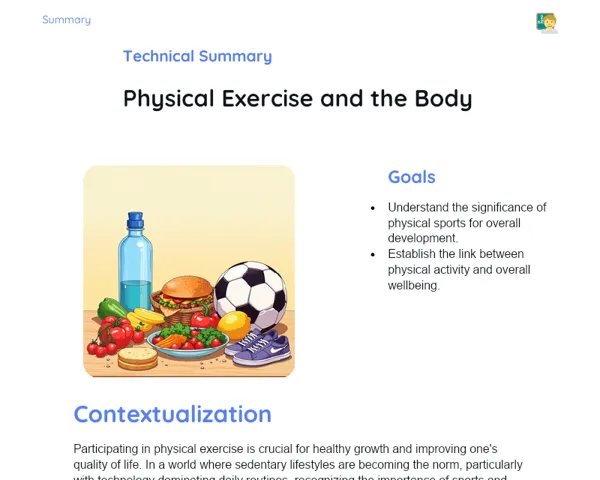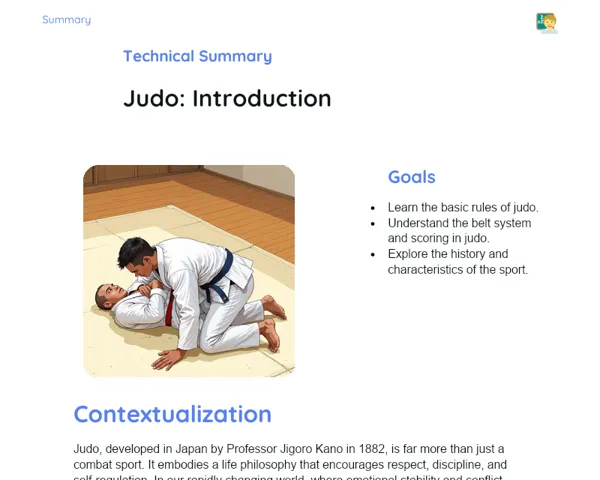Summary Tradisional | Net and Wall Sports
Contextualization
Net and wall sports enjoy immense popularity and are played across the globe. These games are defined by the use of a net or a wall that splits the playing area, creating a clear space for the activity. Popular examples include tennis, volleyball, badminton, squash, and table tennis. Besides encouraging physical fitness, these sports also help in honing important skills such as hand–eye coordination, agility, quick reflexes, and team spirit.
Apart from their benefits for our health and well-being, these sports boast a rich heritage and have distinct rules and objectives. For instance, tennis traces its roots back to 12th century France and has evolved over the years, while volleyball was invented in the United States in 1895 as a less strenuous alternative to basketball. Every sport has its unique aspects in terms of the playing court, equipment, and scoring system, making each both interesting and challenging. A good understanding of these differences is essential for anyone keen to either play them or enjoy watching them.
To Remember!
Tennis
Tennis is a net sport played on a rectangular court that is divided by a net. Each player uses a racket to hit the ball back and forth, trying to ensure that the opponent fails to return it effectively. Matches can be played either as singles or doubles. Tennis has a distinctive scoring system where points are denoted as 15, 30, 40, and game. To win a set, a player must secure at least six games and lead by a two-game margin over the opponent. In case both players reach six games each, a tie-break is used to decide the set winner. The game demands adherence to precise rules like alternating serves and switching service areas, which adds a strategic and technical dimension to the sport.
-
Rectangular court divided by a net.
-
Scoring system: 15, 30, 40, game.
-
Sets won with a minimum two-game lead.
Volleyball
Volleyball is played on a court that is bisected by a high net, with two teams of six players each. The objective is to pass the ball over the net using no more than three touches, ensuring that it lands on the opposing team's side of the court. A unique feature of the game is the rotation system, where players change positions after each point when the opposing team wins the serve. Matches are typically played in sets, each consisting of 25 points, and a team needs to win at least three sets to claim the match. Apart from physical ability, volleyball demands excellent coordination and teamwork, as constant communication and synchronized attacks and defenses are crucial.
-
Court divided by a high net.
-
Teams of six players.
-
Scoring in sets of 25 points.
Badminton
Badminton is played on a court split by a net, and involves the use of rackets and a shuttlecock. The aim is to hit the shuttlecock over the net so that it lands in the opponent’s court. The game can be played as singles (one vs one) or doubles (two vs two). The scoring is played in sets of 21 points, where the winner must lead by at least two points. Specific service areas on the court and defined rules about the shuttlecock’s flight add to the game’s precision. Badminton calls for quick reflexes, superb agility, and precision.
-
Court divided by a net.
-
Use of rackets and shuttlecock.
-
Scoring in sets of 21 points.
Squash
Squash is played indoors in a four-walled court. Players use rackets to hit the ball against the front wall, ensuring that the opponent cannot return it properly. Since the court is relatively small, quick movements and agility are indispensable. The scoring system is based on sets of 11 points, with a two-point margin required to win. The game also has designated serving zones and mandates that the ball must hit the front wall before it touches any other surface. Squash is indeed a high-intensity sport that tests physical endurance, speed, and tactical planning.
-
Closed court with four walls.
-
Scoring in sets of 11 points.
-
Ball must hit the front wall.
Table Tennis
Also known as ping-pong, table tennis is played on a table that is divided by a net. Players use small paddles to hit a lightweight ball back and forth with the aim of outsmarting their opponent. Scoring is carried out in sets of 11 points and the winner must secure a two-point advantage. Matches can be organised as singles or doubles. The rules cover aspects like service, changing sides, and the dimensions of the table. Quick reflexes, precision, and strategic play form the backbone of table tennis.
-
Table divided by a net.
-
Scoring in sets of 11 points.
-
Use of small paddles and lightweight ball.
Key Terms
-
Tennis: A net sport on a rectangular court with rackets and a ball, scored as 15, 30, 40, game.
-
Volleyball: A team net sport on a court with six players per side, scored in sets of 25 points.
-
Badminton: A net sport using rackets and a shuttlecock, with scoring in sets of 21 points.
-
Squash: A wall sport played indoors with rackets and a ball, using sets of 11 points for scoring.
-
Table Tennis: Also known as ping-pong, a net sport on a table using small paddles, scored in sets of 11 points.
Important Conclusions
Net and wall sports like tennis, volleyball, badminton, squash, and table tennis are widely enjoyed and offer great benefits in terms of fitness and the development of both motor and strategic skills. Each sport comes with its own set of rules, specialized equipment, and distinct scoring methods, all of which were discussed in detail during the lesson. Being aware of these differences enables students to participate more knowledgeably and enjoy the sports better, whether playing or watching.
Moreover, the rich history of these sports adds to their charm and relevance in today’s sporting world. Knowing about their origins and evolution not only enhances practical engagement but also deepens appreciation for these disciplines. The lesson underscored the importance of learning skills such as coordination, agility, and teamwork – qualities that are nurtured through regular practice of these sports.
We encourage students to continue exploring both the technical and theoretical aspects of these sports to further enrich their skills and understanding. Delving into these sports contributes not just to physical well-being, but also to personal and social growth, reinforcing values like discipline, cooperation, and respect for rules.
Study Tips
-
Review the rules and scoring mechanisms of each sport, and compare the nuances among them.
-
Watch match videos of various net and wall sports to see practical applications of the rules and strategies discussed.
-
Participate in practical sessions or games to boost motor skills and understand real-world strategies in these sports.



